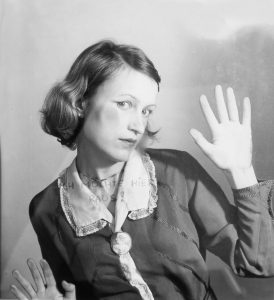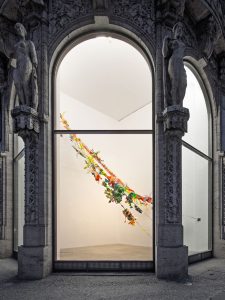 |
| abc 2016 overview |
How to survive the madness of an art fair and find your way through a maze of contemporary art? On Sunday September 18th, Gallery Quest organized an abc Art Berlin Contemporary exploration to shed more light on some very interesting art.
The first abc art fair was born in 2008 and came out of the same hat as Gallery Weekend, an initiative started in 2005 by a group of Berlin gallery owners. The intention was to get more art buyers and collectors into the city and for this purpose they smartly created two fixed art dates in the year. Gallery Weekend in May and abc in the so called Kunstherbst (art autumn) in September are now a given for every art-ionata.
Our first stop and also one of the first galleries on the premises is the young and hipster (together with Kraupa-Tuskany Zeidler and Future Gallery) Berlin gallery Société. Interesting, because on the abc floor plan they were situated all the way in the back of the former post station next to U Gleisdreieck. Apparently they pulled some strings and managed to talk their way to the front of the hall, even next to Esther Schipper gallery, one of the veterans and co-founder of the whole abc/gallery weekend art-fest itself.
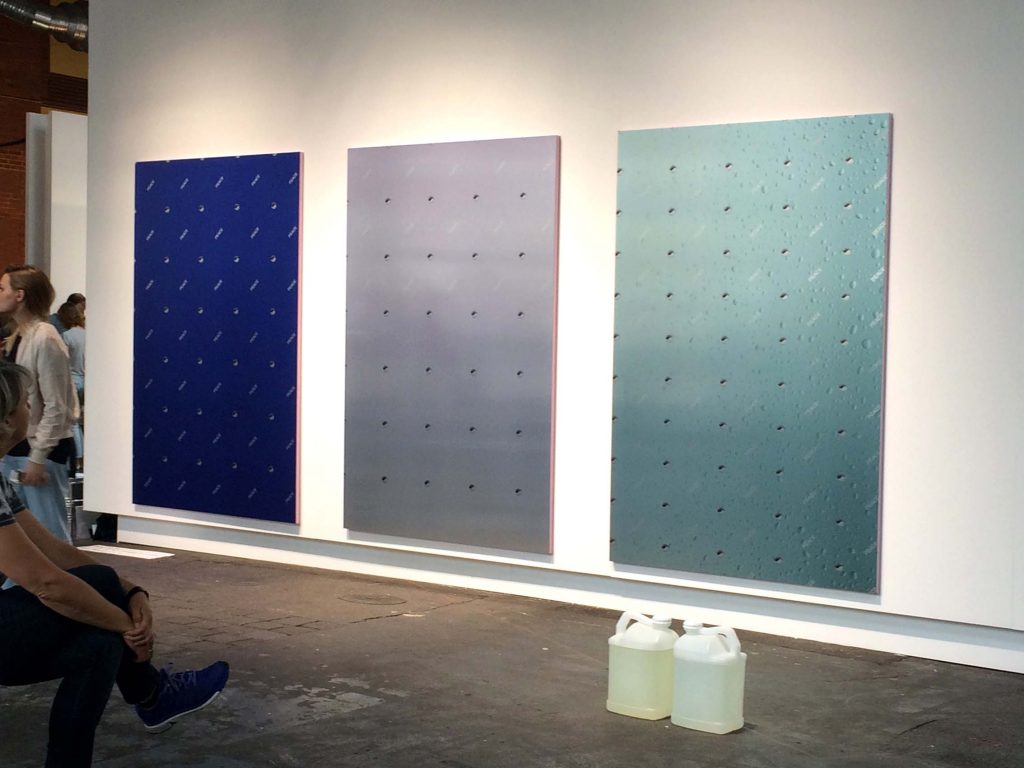 |
| Société with Timur Si-Qin and Sean Raspet |

It is a circle with a wave in it. Or better: it is a cross over between the yin-yang sign and the Pepsi cola logo, which is already a pretty funny notion by itself. Why is this logo so appealing, you might think? Because it uses a shape that every one knows: the shape of the earth. Here presented on a sponsor wall with the word ‘peace’ underneath it, we can be the pop stars, affiliating ourselves with a world view and a uplifting drink at the same time.
The great thing about art fairs is that you can cross the whole town in a matter of minutes. So from Société, whose gallery space is located near the Potsdamer Straße gallery hub, our next stop is Captain Petzel (whose employees also answer with a straight face to the name Captain Pretzel), located on the Karl-Marx-Allee.
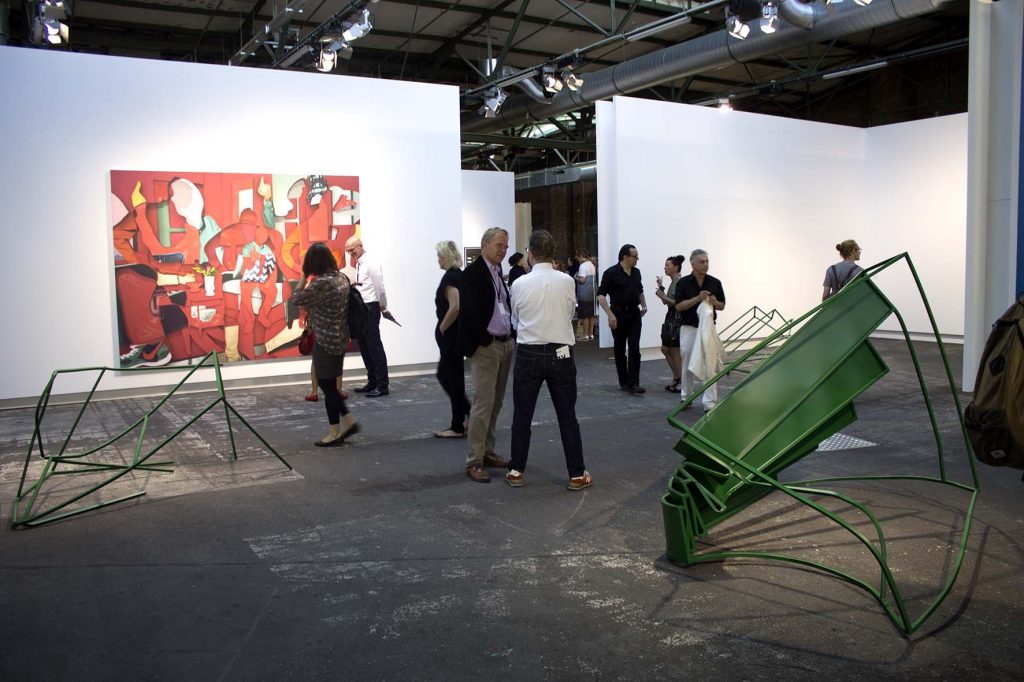 |
| Monnika Sosnowska @Captain Petzel |
On the floor we see distorted sculptures by Polish artist Monika Sosnowska (1971) with which she reacts to the rapidly changing city-scape of Warsaw. They are part of a series called Market which she started in 2013 and refer to the now demolished Decade Stadium, built in the fifties by the Socialist government. It was among other things used for parades and after the wall came down it became the biggest outdoor (black) market in Europe, known as the Jarmark Europa. It was demolished in 2008 to built a new stadium for the 2012 UEFA Champions League tournament, and with it’s destruction a popular folksy tradition and meeting place also disappeared.
The sculptures are in fact based on the market stands from the Jarmark, now fumbled together like a peace of paper you don’t need anymore. This is the eternal question: what do you keep and what do you through away? And in the case of a city: what is or has history enough to preserve it, who decides this and what are the criteria? A contemporary example in Berlin is the rebuilding of the former Stadtschloss, a fake building from a former era for which an actual piece of history (Palast der Republik) has been destroyed.
 |
| Tomàsz Mroz @Piktogram |
Around the corner Piktogram gallery from Warsaw (there was a lot to see from the Polish capital!) shows a table with a spoon gone wild, circling a piece of bread while a lazy worm-like creature is hanging from the edge. Next to it, on the ground, there is a cardboard box, filled with hay which houses the “mother”. She moves from time to time, which made some visitors jump. They are made by Tomàsz Mrotz (1979), a Polish artist who’s latest work consists of these cute but creepy (think Tim Burton) story telling like installations.
Alienation can not only be achieved by making things move, but also by changing their proportions, as we can see at Galerie Tobias Naehring where the giant vexier puzzles made by Austrian artist Eva Grubinger (1970) are on view. She shows us two from the Five Problems, which is the name of the series. They are enlarged versions of brain teasers where you have to get a little ball on a rope disentangled from a piece of wood.
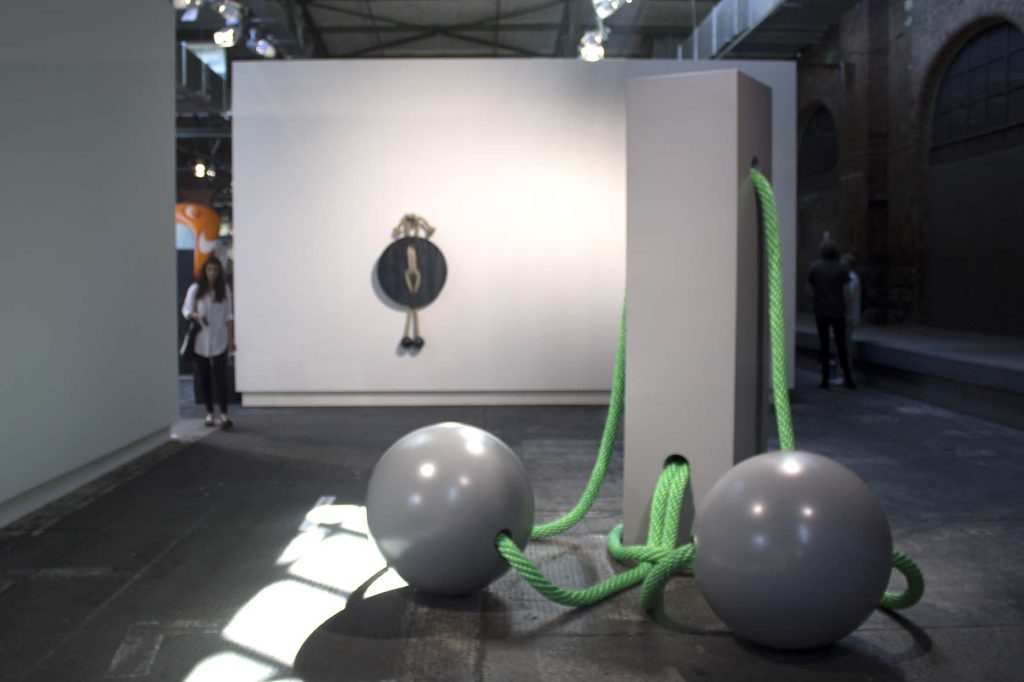 |
| Eva Grubbinger @Galerie Tobias Naehring |
The origin of this type of puzzle is not clear, but they can interestingly enough be found in various cultures, from ancient China and Greece to Iran. While nowadays we also experience problems that seem too large to solve (the climate crisis comes to mind), one cant’t help but noticing that this particular Problem has the shape of a giant penis.
A strangely relaxing psychedelic caravan slash mini disco made by american artist Kenny Scharf (1958) brings a nice pause from all our worldly troubles. Scharf comes from the street art scene, was friends with Keith Haring and started making little closed up spaces he called ‘closets’ which he filled with found materials from the street and painted in crazy neon colors. By creating a room that is totally different from the outside world, it functions as an escape to the busy city life.
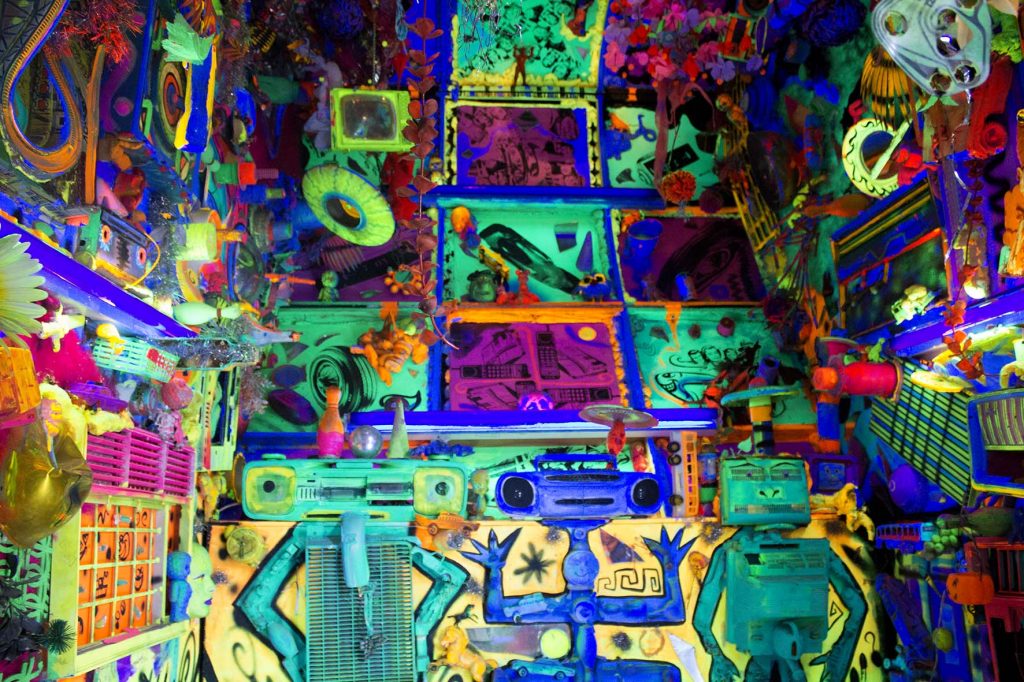 |
| Kenny Scharf @Galerie Hans Mayer |
Closet#16 is the only transportable one he made. Most of his closets have ended up in permanent installations in museums or have been destroyed. This one is made out of several older ones, which you can tell by the old toys he used like the Flintstones dolls, and it is therefore kind of unique.
Wouldn’t it be great to have spaces like that all over town? We lucky Berliners have a surrogate we can go to, a Kenny-Scharf-rip-off if you will. Since 2014 in certain areas in Berlin you can find mini disco’s in old telephone cells, where for 2 Euro’s you can choose your favorite song and have a private mini party. So whenever you need an escape from your wild life/job/relationship/whatever/all-of-the-above and there is no gallery in the vicinity, you now know where to go.
 |
| Kenny Scharf, Closet #16- outside view |
